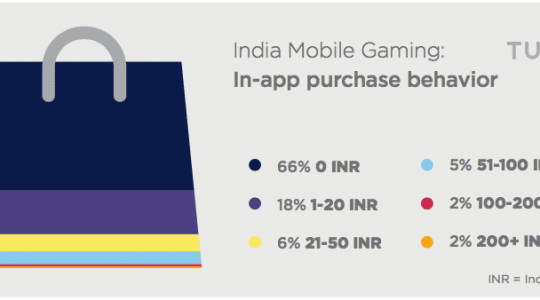
photo by Scott Beale / Laughing Squid
When you look at the world from a 10-years-from-now point of view, some things become really simple.
First, all commerce is becoming digital. Second, all things digital are moving to mobile. And third, brands and retailers that want to have a strong, loyal, connected, and dedicated relationship with their customers need to be riding along on the 3-foot device … the mobile device that is never more than three feet from our bodies.
The problem has been: How do you get there?
Quid pro quo
The benefits for the brand or retailer being on customers’ phones are clear:
- Get a closer brand connection with customers. (Customers who have your app spend up to 48% more.)
- Build a better understanding of customers’ lives, location, and needs, every moment. (What if you could automatically re-rout customers to a new flight when theirs is canceled?)
- Earn the right to message customers (in-app and via push) about new products or services. (Apps that use push messaging double their retention rates.)
Ultimately, of course, it comes down to revenue: higher sales. Being on the most personal of all personal computing devices ever invented is a massive advantage. In fact, an exec from GameStop told me recently that clients who have installed their mobile app are far more valuable to the company than even members of the highest level of their loyalty program. Multiples more valuable.
But what about consumers? What do they get?
Sure, there’s connection to a brand they at least somewhat care about. But isn’t it just like giving a brand or retailer an excuse to market to them… sort of like inviting the telemarketer over to dinner not just one night, but every night? Increasingly, the answer is no.
What have you done for me lately?
As mobile becomes more and more a core part of our lives and app publishers find new and innovative ways to make use of the full technology in our devices, retailers and brands are seeing ways to add value, not just marketing, marketing, marketing. A recent article showed a number of them:
- find a product in-store
- take a picture of a product (those fabulous boots?) and search for it in-app
- get virtual help in-app
- call a sales associate to your location in-store
- price check (and match) automatically
Some of those mostly apply to retailers, and others to brands as well. The focus for each is a little different of course, as mobile changes the landscape on how different players in our changing economy aggregate demand and aggregate supply, as retailers become brands and brands become retailers.
The key, however, is the same in both cases: providing value that people want… and not just providing a place for your brand to live, or your products to be purchased, or a method of pumping marketing messages out to your clients.
Brands and retailers are starting to get smart about this.
Brand and retailer Zara, for instance, initially launched a near-useless iPhone app that did nothing more than show a few pictures of its products. Today, however, the Zara app is much more useful, with social features, Apple Pay on iOS, 18 languages, the ability to scan a bar code and find product information, and full m-commerce capability … while still integrating smoothly into the fashion empire’s extensive stable of physical stores.
The result? Between 5-10 million downloads and a 4.1 rating on Android, a 5-star rating for its just-released new iOS version, and happy customers.
The lesson is as simple as the trend: If your app doesn’t help customers do things they want to do, if it doesn’t solve a problem, and if it doesn’t make their lives easier or better or faster or smoother … it simply doesn’t deserve to be installed. And in an increasingly mobile-first world, that’s the ultimate customer kiss of death.
Like this article? Sign up for our blog digest emails.
Author
Before acting as a mobile economist for TUNE, John built the VB Insight research team at VentureBeat and managed teams creating software for partners like Intel and Disney. In addition, he led technical teams, built social sites and mobile apps, and consulted on mobile, social, and IoT. In 2014, he was named to Folio's top 100 of the media industry's "most innovative entrepreneurs and market shaker-uppers." John lives in British Columbia, Canada with his family, where he coaches baseball and hockey, though not at the same time.




Leave a Reply
You must be logged in to post a comment.